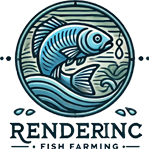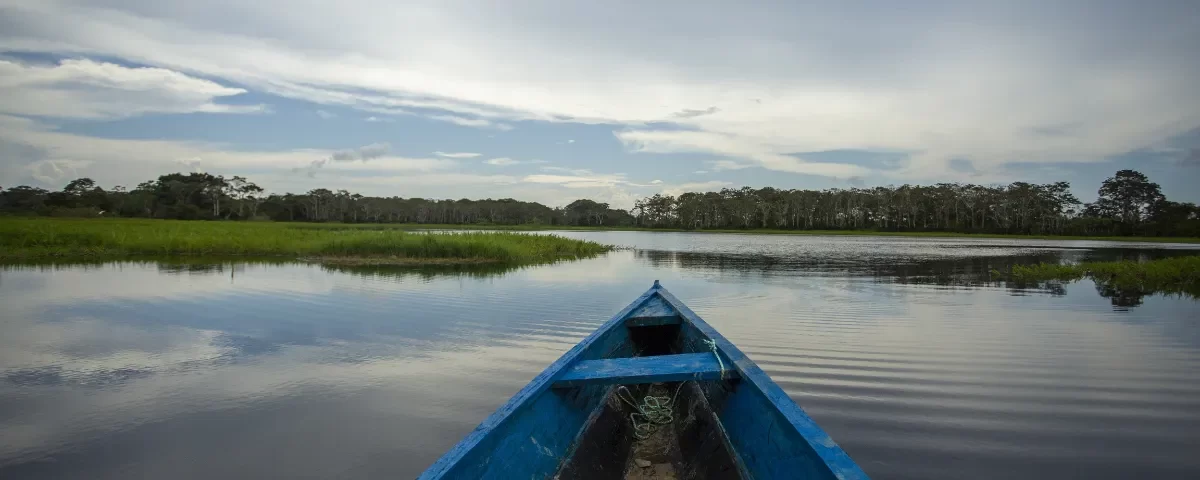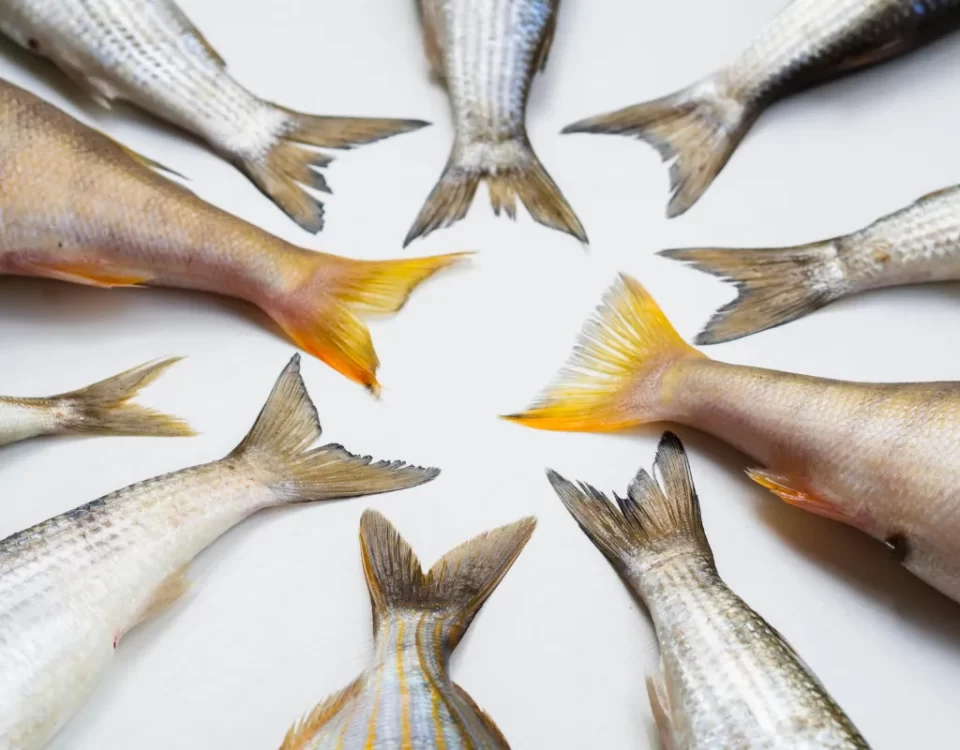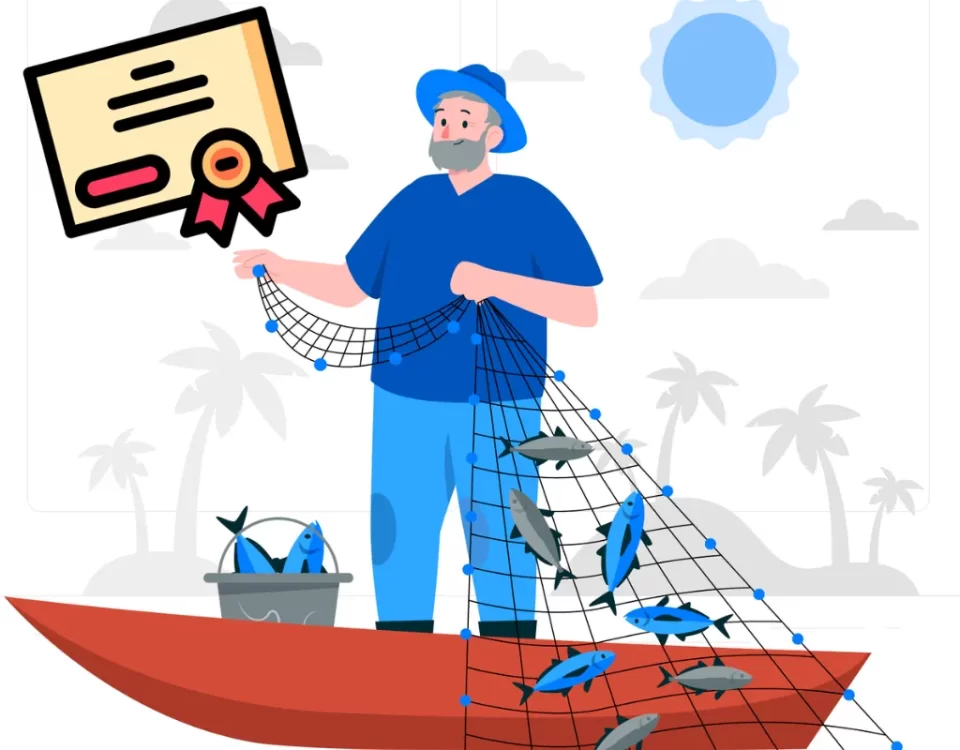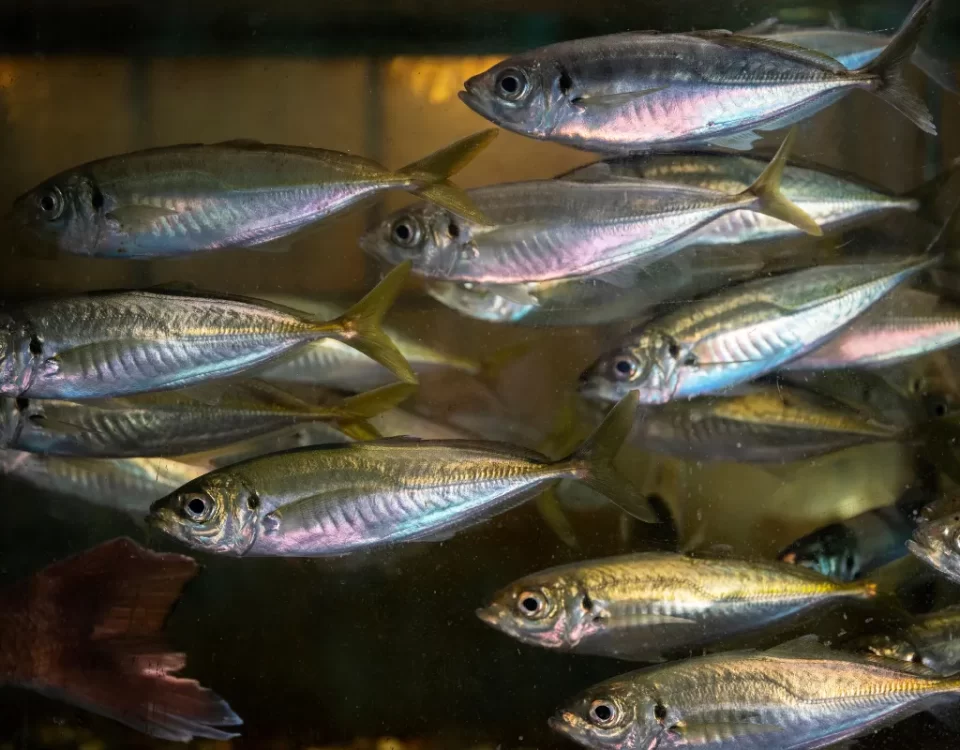How to Use Waste from Fish Farms for Agriculture

Exploring the Benefits of Recirculating Aquaculture Systems (RAS)
setembro 13, 2024
Best Practices for Hatchery Management in Aquaculture
setembro 13, 2024In the realm of aquaculture, where the cultivation and harvesting of fish play a pivotal role in meeting the world’s burgeoning demand for seafood, a pressing concern looms large – the issue of waste management. Fish farms, while essential for sustaining the global seafood supply, generate a significant amount of waste that poses environmental challenges if not properly managed. The discharge of excess feed, feces, and uneaten food from aquaculture operations can lead to nutrient pollution, oxygen depletion, and the proliferation of harmful algal blooms in water bodies.
The delicate balance of aquatic ecosystems can be disrupted by the accumulation of waste from fish farms, resulting in ecological imbalances and detrimental effects on water quality. To tackle this issue and mitigate the environmental impact of aquaculture operations, innovative solutions are needed. One promising approach gaining traction in the industry is the utilization of fish farm waste for agricultural purposes, creating a symbiotic relationship between aquaculture and agriculture.
By repurposing fish farm waste as a valuable resource for agricultural activities, we can not only alleviate the environmental burden of aquaculture but also harness the nutrient-rich properties of this organic material to enhance soil fertility and crop productivity. The concept of closed-loop systems, where waste from fish farms is recycled and utilized in agricultural settings, presents a sustainable solution that promotes resource efficiency and environmental stewardship. Through strategic management practices and innovative technologies, the potential of fish farm waste as a beneficial input for agriculture can be unlocked to create a symbiotic relationship that benefits both sectors.
Understanding Fish Farm Waste
Fish farms play a crucial role in providing a significant portion of the world’s seafood. However, along with the production of fish, fish farms generate various types of waste that can impact the environment if not managed properly. The primary types of waste produced by fish farms include excrement, uneaten feed, and other organic matter. Excrement from fish contains nitrogen and phosphorus, which can lead to nutrient pollution in water bodies if released untreated. Uneaten feed adds to organic matter that can deplete oxygen levels in the water, causing harm to aquatic life.
Types of Fish Farm Waste
Excrement from fish is a major component of waste in fish farms. Fish excrete ammonia, which can be harmful in high concentrations and contributes to water pollution. Uneaten feed is another significant waste stream. Overfeeding or inefficient feeding practices can result in excess feed sinking to the bottom, where it decomposes and contributes to water quality issues. Other organic matter, such as dead fish or plant material, also adds to the waste generated by fish farms.
Environmental Consequences of Improper Waste Management
Improper management of fish farm waste can have detrimental environmental consequences. The excessive nutrients in fish excrement and uneaten feed can lead to eutrophication in water bodies. Eutrophication occurs when there is an overabundance of nutrients, promoting the rapid growth of algae and depleting oxygen levels in the water, creating dead zones where aquatic life cannot survive. Additionally, pathogens present in fish farm waste can pose risks to both aquatic organisms and human health if not properly treated.
Importance of Proper Waste Management
In light of the environmental risks associated with fish farm waste, proper waste management practices are essential. Implementing effective waste treatment systems, such as biofilters or constructed wetlands, can help remove excess nutrients and organic matter before they are released into the surrounding environment. Monitoring and regular maintenance of these systems are crucial to ensure their effectiveness in reducing the impact of fish farm waste on water quality. By prioritizing sustainable waste management practices, fish farms can mitigate their environmental footprint and contribute to the long-term health of aquatic ecosystems.
Benefits of Using Fish Farm Waste for Agriculture
In the world of sustainable agriculture, utilizing fish farm waste presents a plethora of benefits that extend beyond the confines of traditional farming practices. By harnessing the nutrient-rich byproducts of fish farming operations, farmers can unlock a treasure trove of advantages that positively impact both soil health and crop yields. Let’s delve into the potential benefits that arise from integrating fish farm waste into agricultural systems.
Enhancing Soil Health
One of the most notable benefits of incorporating fish farm waste into agricultural practices is its profound impact on soil health. Fish waste, which is rich in essential nutrients such as nitrogen, phosphorus, and potassium, serves as a potent organic fertilizer that replenishes soil nutrients and promotes microbial activity. This influx of nutrients not only nourishes the soil but also helps to improve its structure, aeration, and water retention capacity. As a result, farmers can cultivate healthier soils that support robust plant growth and resilience against environmental stressors.
Boosting Crop Yields
The utilization of fish farm waste in agriculture has shown promising results in boosting crop yields by providing plants with a diverse array of nutrients essential for their growth and development. When integrated into the soil, fish waste gradually releases nutrients over time, ensuring a sustained supply of macro and micronutrients that are vital for plant health. This steady nutrient release mechanism not only fosters optimal plant growth but also helps to enhance the overall nutrient content of crops, leading to healthier produce with enhanced nutritional value.
Reducing Dependency on Synthetic Fertilizers
By incorporating fish farm waste into agricultural systems, farmers can significantly reduce their reliance on synthetic fertilizers, which often come with environmental drawbacks such as soil degradation and water contamination. Organic fertilizers derived from fish waste offer a sustainable alternative that mimics natural nutrient cycling processes, fostering a holistic approach to soil fertility management. This reduction in synthetic fertilizer usage not only minimizes the environmental footprint of agricultural operations but also contributes to the long-term sustainability and resilience of farming practices.
Promoting Circular Economy Principles
The integration of fish farm waste into agricultural systems exemplifies the tenets of a circular economy, where resources are utilized in a cyclical and regenerative manner to reduce waste and maximize efficiency. By repurposing fish waste as a valuable input in agriculture, farmers can effectively close the loop in the food production cycle, transforming what was once considered a waste product into a valuable resource with multiple benefits. This shift towards a circular approach not only enhances resource efficiency but also fosters a more sustainable and integrated agricultural system that upholds the principles of environmental stewardship and economic viability.
By recognizing and harnessing the myriad benefits of using fish farm waste for agriculture, farmers can tap into a sustainable and regenerative approach that harmonizes ecological health with agricultural productivity. This innovative practice not only yields tangible benefits for soil health and crop yields but also paves the way for a more resilient and sustainable agricultural future.
Types of Fish Farm Waste Suitable for Agriculture
Fish farming not only provides a sustainable source of protein but also generates valuable waste that can be repurposed to enhance agricultural practices. By recognizing and utilizing the different types of fish farm waste, farmers can tap into a rich resource for improving soil fertility and crop yield.
1. Solid Waste
One of the primary types of fish farm waste suitable for agriculture is solid waste, which includes uneaten feed, feces, and dead organisms. These organic materials are rich in nutrients such as nitrogen, phosphorus, and potassium, essential for plant growth. When incorporated into the soil, solid waste acts as a natural fertilizer, providing a boost to soil fertility and supporting healthy plant development.
2. Sludge
In addition to solid waste, fish farms produce sludge, a semi-solid byproduct consisting of organic matter and microorganisms. Sludge contains a diverse array of beneficial bacteria and enzymes that can enhance soil health and promote nutrient uptake by plants. Its rich organic content makes sludge a valuable resource for improving soil structure and fostering a balanced ecosystem in agricultural settings.
3. Water
The water used in fish farming, often enriched with nutrients from fish feed and metabolism, can also be repurposed for agricultural purposes. Known as effluent, this nutrient-rich water can be used for irrigation in fields, providing plants with a supplemental source of essential nutrients. Effluent can help reduce the need for synthetic fertilizers while promoting sustainable water use in agricultural practices.
4. Bones and Scales
Even fish parts that are typically discarded, such as bones and scales, contain valuable nutrients that can benefit soil fertility. These calcium-rich materials can help balance soil pH levels and provide essential minerals for plant growth. By composting or incorporating fish bones and scales into the soil, farmers can make use of these often-overlooked resources to improve crop productivity and soil health.
By understanding the diverse types of fish farm waste and their nutrient content, farmers can harness these resources to enhance agricultural practices sustainably. Incorporating fish farm waste into soil amendment strategies can not only reduce waste disposal costs but also promote organic farming methods and improve overall soil fertility for long-term agricultural success.
Methods of Processing Fish Farm Waste for Agricultural Use
The sustainable management of waste from fish farms is crucial for ensuring environmental responsibility and resource efficiency in the aquaculture industry. Fortunately, there are various techniques available for converting fish farm waste into usable fertilizers, which can contribute to enhancing soil fertility and promoting crop growth in agricultural settings. Let’s delve into some of the key methods of processing fish farm waste for agricultural use and evaluate their pros and cons in terms of effectiveness and scalability.
Composting
Composting is a widely recognized method of processing organic waste, including waste from fish farms, into nutrient-rich compost that can be used as a fertilizer in agriculture. By mixing fish waste with carbon-rich materials such as straw or sawdust, and providing the right conditions for decomposition, composting can transform organic matter into a valuable soil amendment. Pros of composting include reducing waste volume, improving soil health, and enhancing nutrient availability for plants. However, cons such as odor issues and the need for adequate space and management to ensure effective composting should be considered.
Vermicomposting
Vermicomposting is another popular technique for processing organic waste, wherein earthworms are utilized to break down organic matter into nutrient-rich vermicompost. By introducing worms to fish farm waste, the decomposition process is accelerated, and the resulting vermicompost is a potent fertilizer that contains beneficial microorganisms for soil and plant health. Pros of vermicomposting include increased nutrient availability, enhanced soil structure, and environmentally friendly waste management. Cons may involve management of worm populations and optimal conditions for vermicompost production.
Anaerobic Digestion
Anaerobic digestion is a biochemical process that involves the breakdown of organic matter in the absence of oxygen, resulting in the production of biogas and a digestate residue that can be used as a fertilizer. By capturing biogas for energy generation and utilizing the digestate as a soil amendment, anaerobic digestion offers a dual benefit of waste treatment and resource recovery. Pros of anaerobic digestion include reducing greenhouse gas emissions, creating a renewable energy source, and producing a nutrient-rich fertilizer. Cons may involve investment costs and technical expertise for implementation.
Biochar Production
Biochar is a carbon-rich material produced through the pyrolysis of organic matter, including fish farm waste, at high temperatures in the absence of oxygen. The resulting biochar can be incorporated into soil as a fertilizer to improve soil structure, water retention, and nutrient holding capacity. Pros of biochar production include enhancing soil fertility, sequestering carbon in the soil, and reducing nutrient leaching. Cons may involve the energy intensive nature of pyrolysis and potential impacts on soil pH.
By exploring these methods of processing fish farm waste for agricultural use, farmers can leverage sustainable practices to close the loop in the food production system and contribute to building resilient and regenerative agricultural systems. Choosing the most suitable method based on site-specific factors and available resources is essential for maximizing the benefits of fish farm waste recycling in agriculture.
Application of Fish Farm Waste Fertilizers in Agriculture
Fish farm waste can be a valuable resource for agriculture, providing nutrient-rich fertilizers that can enhance crop growth and soil health. When it comes to applying fish farm waste fertilizers to different types of crops, there are several guidelines to follow to ensure optimal results.
Guidelines for Proper Application
- Composting: One of the most effective ways to utilize fish farm waste in agriculture is by composting it. By combining fish waste with other organic materials such as straw or leaves, you can create a nutrient-dense compost that can be used to fertilize a wide variety of crops. Ensure proper aeration and moisture levels in the compost pile to facilitate the decomposition process.
- Topdressing: Another method of applying fish farm waste fertilizers is through topdressing. This involves spreading the fish waste directly onto the soil surface around the base of the plants. Be sure to spread the waste evenly to avoid concentrating nutrients in one area, which can lead to nutrient imbalances and potential plant damage.
- Liquid Fertilization: Fish farm waste can also be processed into liquid fertilizers that can be applied through irrigation systems or foliar sprays. This method provides a quick nutrient boost to crops and can be especially beneficial during critical growth stages.
Potential Concerns and Challenges
While using fish farm waste fertilizers in agriculture can offer numerous benefits, there are some potential concerns and challenges to be aware of:
- Nutrient Imbalance: Excessive application of fish waste fertilizers can lead to nutrient imbalances in the soil, which may negatively impact crop growth and yield. It’s important to monitor soil nutrient levels regularly and adjust fertilization practices accordingly.
- Odor: Fish farm waste can have a strong odor, especially when fresh. Proper composting and storage techniques can help mitigate odor issues and minimize potential disturbances to neighboring properties.
- Regulatory Compliance: Depending on the location and scale of the fish farm, there may be regulations governing the disposal and use of fish waste in agriculture. Ensure compliance with local authorities and seek guidance on proper waste management practices.
By following these guidelines and addressing potential concerns, farmers can effectively harness the nutrient-rich benefits of fish farm waste fertilizers to enhance crop productivity and sustainability in agriculture.
Case Studies and Success Stories
In the realm of sustainable farming practices, the utilization of fish farm waste for agricultural purposes has garnered significant praise and attention. Let’s delve into a few vibrant case studies and success stories that exemplify the adroit application of this eco-friendly method.
Harbor Aquaponics: A Model of Innovative Resource Management
One standout success story is Harbor Aquaponics, a progressive farm nestled on the scenic shores of the Pacific Northwest. By integrating aquaculture with hydroponic systems, Harbor Aquaponics has seamlessly repurposed fish waste into a potent organic fertilizer for their lush vegetable gardens. The outcome? Bountiful crops of vibrant greens and delectable fruits, all nurtured by the nutrient-rich byproducts of their thriving fish populations.
Seascape Farms: Cultivating Abundance through Circular Farming
On the sun-drenched coast of California, Seascape Farms stands as a beacon of sustainability and agricultural ingenuity. This forward-thinking establishment has mastered the art of circular farming by harnessing fish farm waste to fortify their soil and boost crop yield. Through meticulous planning and dedication to eco-conscious practices, Seascape Farms has not only reduced waste but also enhanced the fertility of their land, yielding exceptional harvests year after year.
Riverfront Ranch: A Testament to Synergy between Aquaculture and Agriculture
Nestled along the winding banks of the Mississippi River, Riverfront Ranch epitomizes harmonious coexistence between aquaculture and agriculture. By reimagining waste as a valuable resource, Riverfront Ranch has experienced a paradigm shift in their farming approach. Through strategic placement of fish ponds and crop fields, they have created a self-sustaining ecosystem where fish waste serves as a cornerstone of nutrient cycling, fostering soil health and crop vitality.
GreenWave Gardens: Pioneering Sustainable Practices in the Heartland
Venturing into the heartland of America, GreenWave Gardens has set a lofty standard for sustainable farming practices. By implementing an innovative closed-loop system, GreenWave Gardens seamlessly integrates fish farming waste into their agricultural operations, catalyzing a regenerative cycle of growth and nourishment. The farm’s commitment to holistic sustainability has not only reaped a harvest of robust crops but has also forged a thriving ecosystem that thrives on interconnectedness and mutual benefit.
Environmental Impact of Using Fish Farm Waste for Agriculture
Reducing Pollution and Enhancing Sustainability
The utilization of fish farm waste in agriculture presents a promising opportunity to address environmental concerns within the aquaculture industry. Fish farms often produce significant amounts of waste in the form of excess nutrients, organic matter, and sediments, which, if not managed properly, can lead to water pollution and ecosystem degradation. By repurposing this waste as fertilizer for agricultural purposes, the nutrients can be effectively recycled, reducing the potential for environmental harm.
Furthermore, the practice of recycling fish farm waste in agriculture can contribute to sustainable farming practices. Instead of allowing the waste to accumulate and negatively impact water quality, diverting it for agricultural use can help restore nutrient balance in soil. This not only benefits crop production but also helps to minimize the environmental footprint of aquaculture operations. In essence, it fosters a circular economy approach where resources are efficiently utilized and waste is transformed into a valuable commodity.
Potential Drawbacks and Limitations
Despite the positive aspects of using fish farm waste for agriculture, there are limitations and challenges that need to be considered. One concern is the quality of the waste material, as it may contain pathogens, heavy metals, or other contaminants that could adversely affect soil health or crop safety. Proper monitoring and regulations are essential to ensure that the waste is safe for agricultural use and does not pose any health risks.
Additionally, the transportation and application of fish farm waste to agricultural sites can increase carbon emissions and energy consumption, offsetting some of the environmental benefits. Technological innovations in transport methods and application techniques may help mitigate these challenges, but sustainable practices must be prioritized to truly maximize the environmental impact of utilizing fish farm waste for agricultural purposes.
After delving into the innovative possibilities of utilizing waste from fish farms for agriculture, it is clear that this symbiotic relationship has immense potential to revolutionize sustainability practices in the farming industry. Throughout this article, we have explored how the nutrient-rich byproducts from fish farming can be effectively repurposed as organic fertilizers and soil amendments for agricultural crops, presenting a win-win solution that benefits both industries and the environment.
Highlighting the importance of sustainable practices is crucial in acknowledging the critical role that responsible farming plays in preserving our ecosystems and ensuring food security for future generations. By incorporating fish farm waste into agricultural practices, farmers have the opportunity to reduce their reliance on synthetic fertilizers, minimize waste pollution in water bodies, and foster a closed-loop system that promotes circular economy principles.
As we envision a more sustainable future for farming, it is essential for all stakeholders in the agricultural and aquaculture sectors to prioritize innovative solutions that promote resource efficiency and environmental stewardship. By embracing the concept of upcycling fish farm waste, farmers can tap into a valuable resource that not only enriches soil quality and enhances crop yields but also contributes to the overall resilience of our food systems in the face of climate change and resource scarcity.
I urge all readers to consider the immense potential of integrating fish farm waste into their farming endeavors, whether on a small or large scale. By harnessing the valuable nutrients inherent in fish waste, we have the opportunity to cultivate a more sustainable agricultural landscape that nurtures both the land and the seas. Let us embark on this shared journey towards a more eco-conscious and regenerative agricultural model for a greener, healthier planet.

Michael Rivers is an experienced aquaculture enthusiast with over a decade of hands-on knowledge in fish farming and sustainable aquatic systems. Passionate about promoting eco-friendly practices, he shares his expertise on fish breeding, water management, and the latest advancements in aquaculture technology. Through his blog, Michael aims to help both beginners and seasoned fish farmers achieve success in their ventures while contributing to the growth of sustainable food production.
